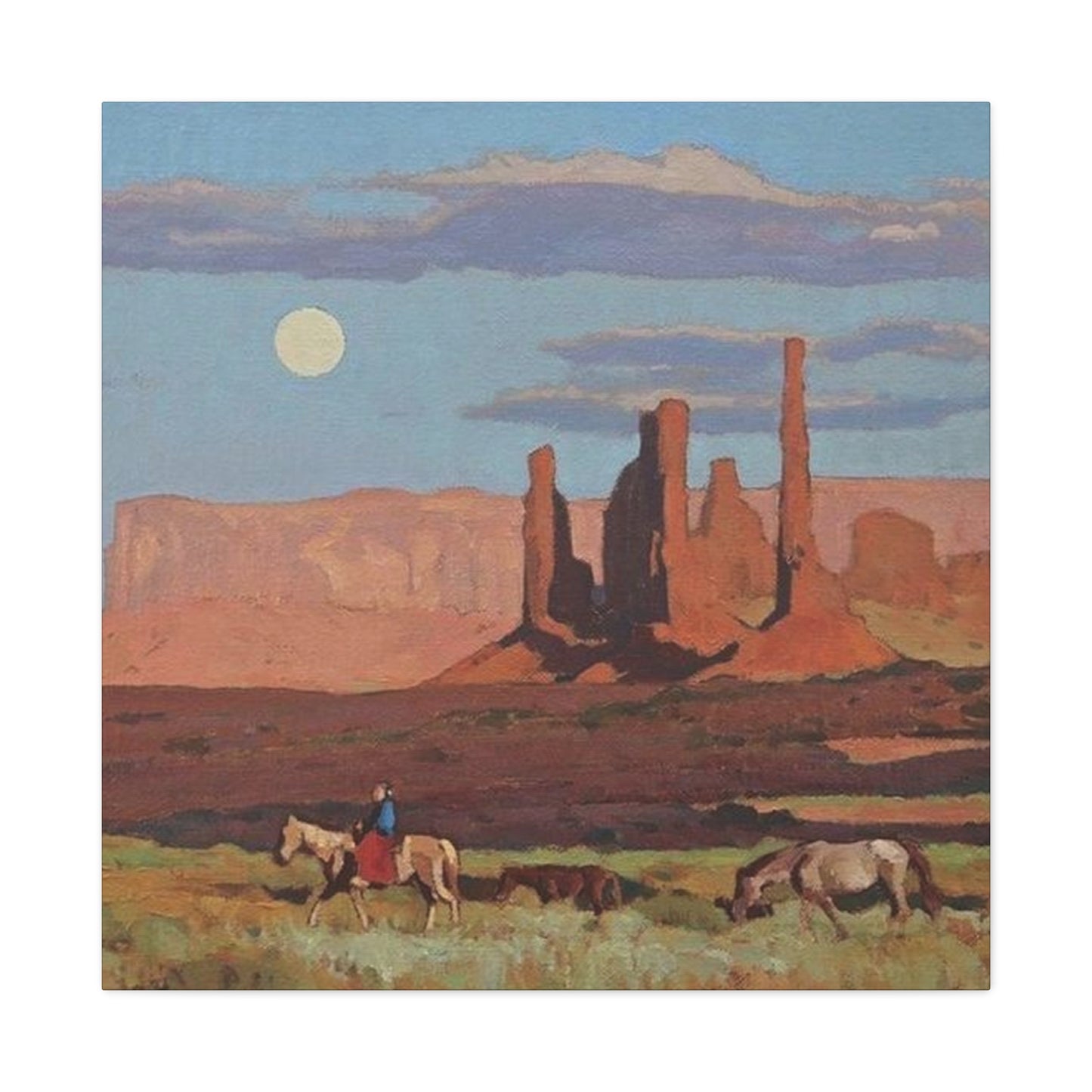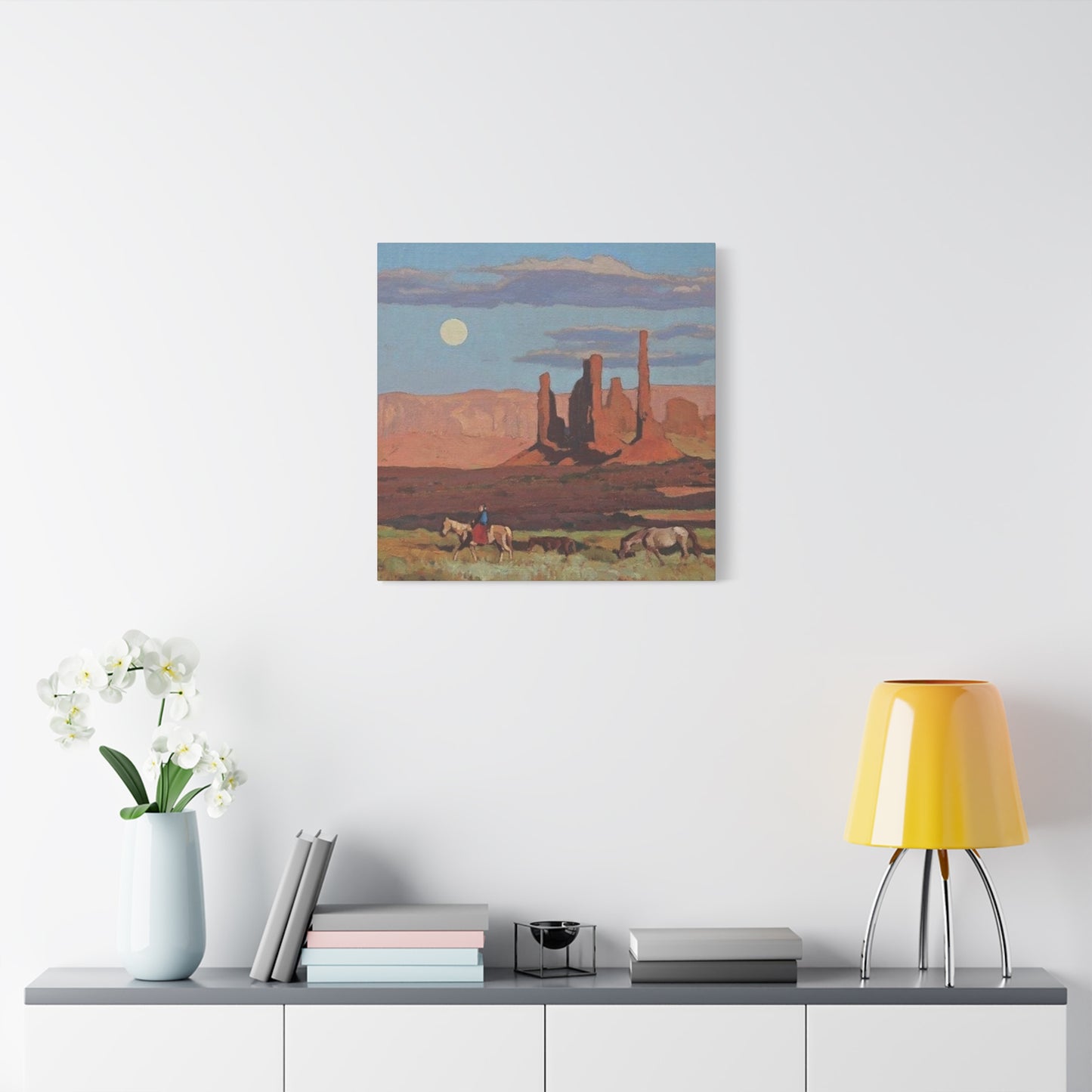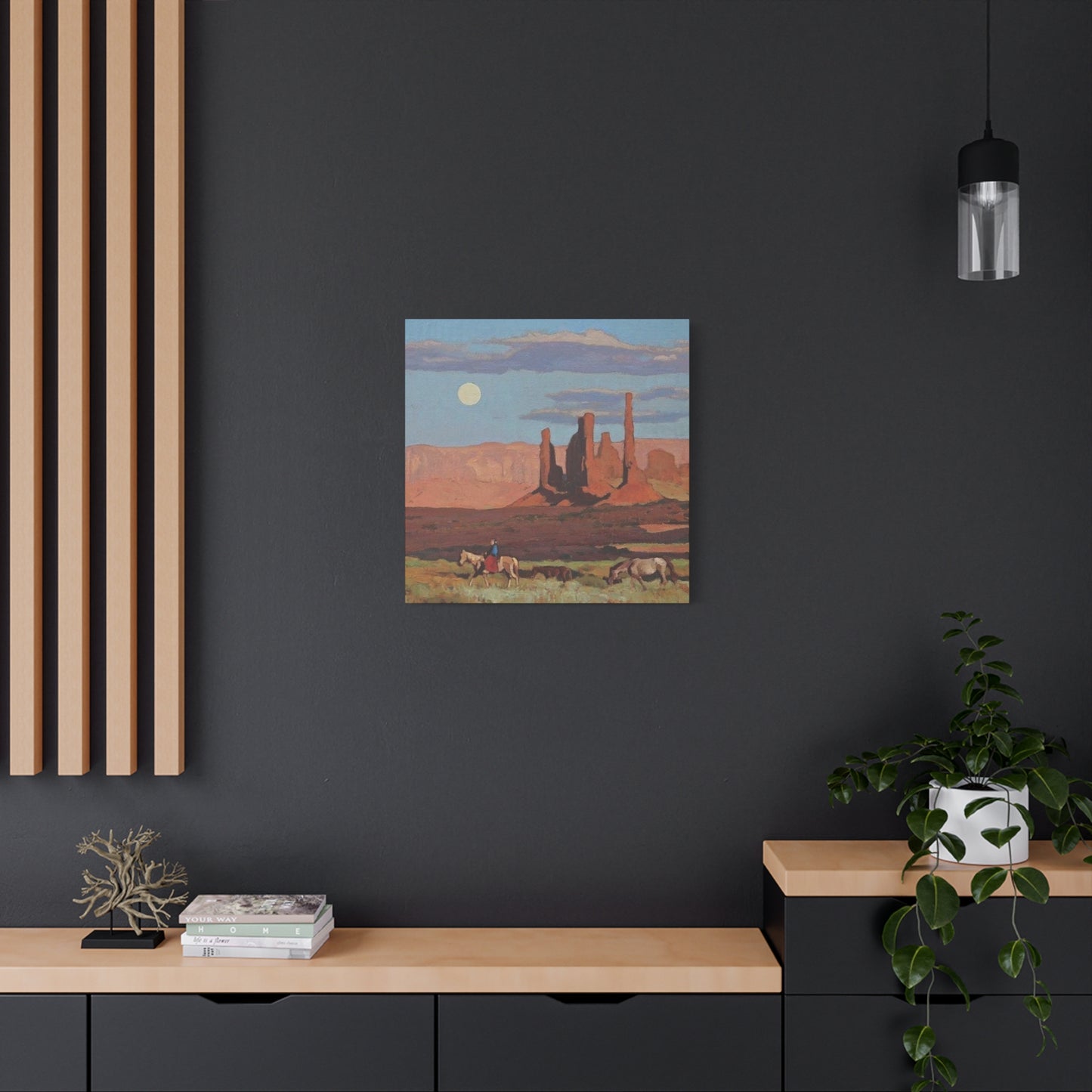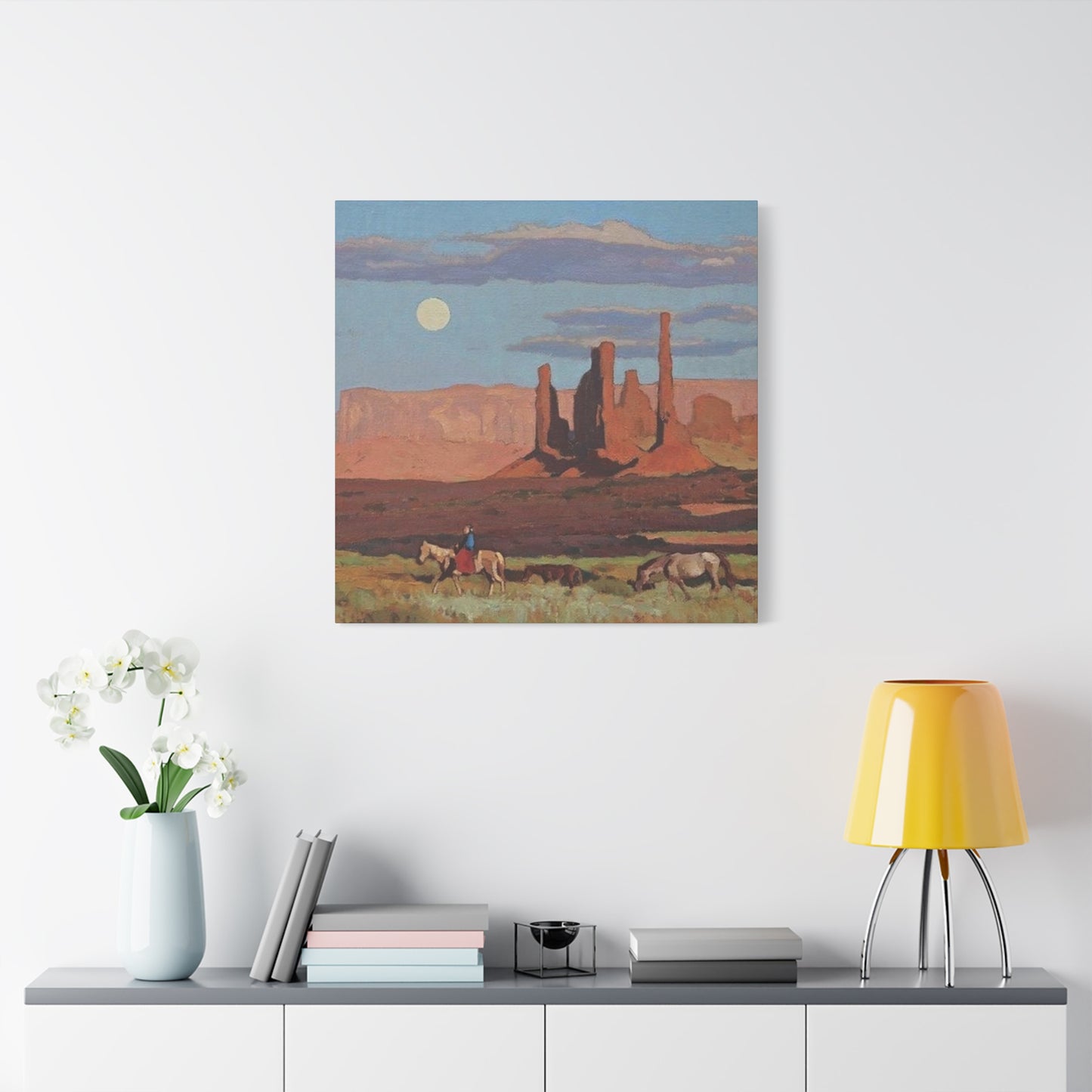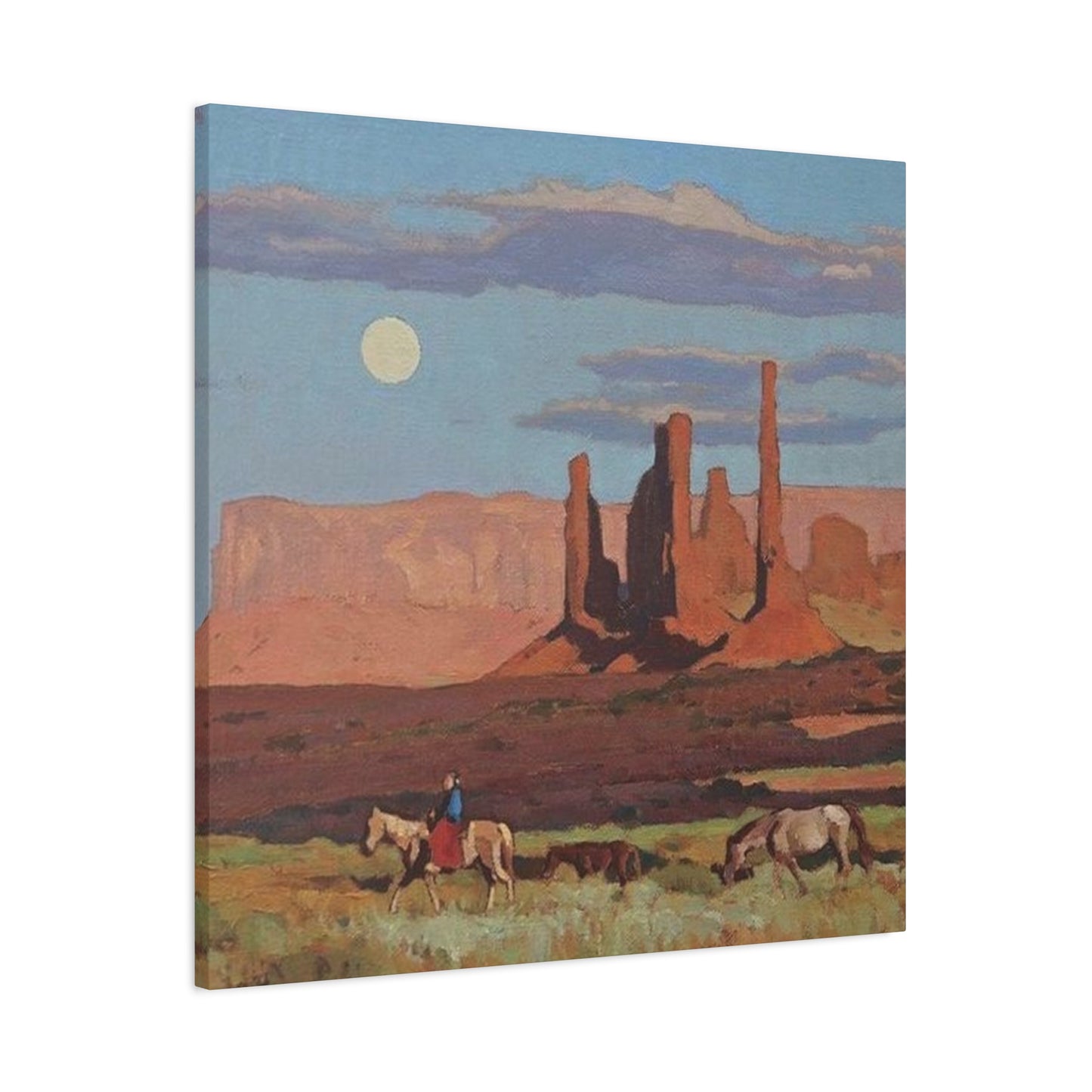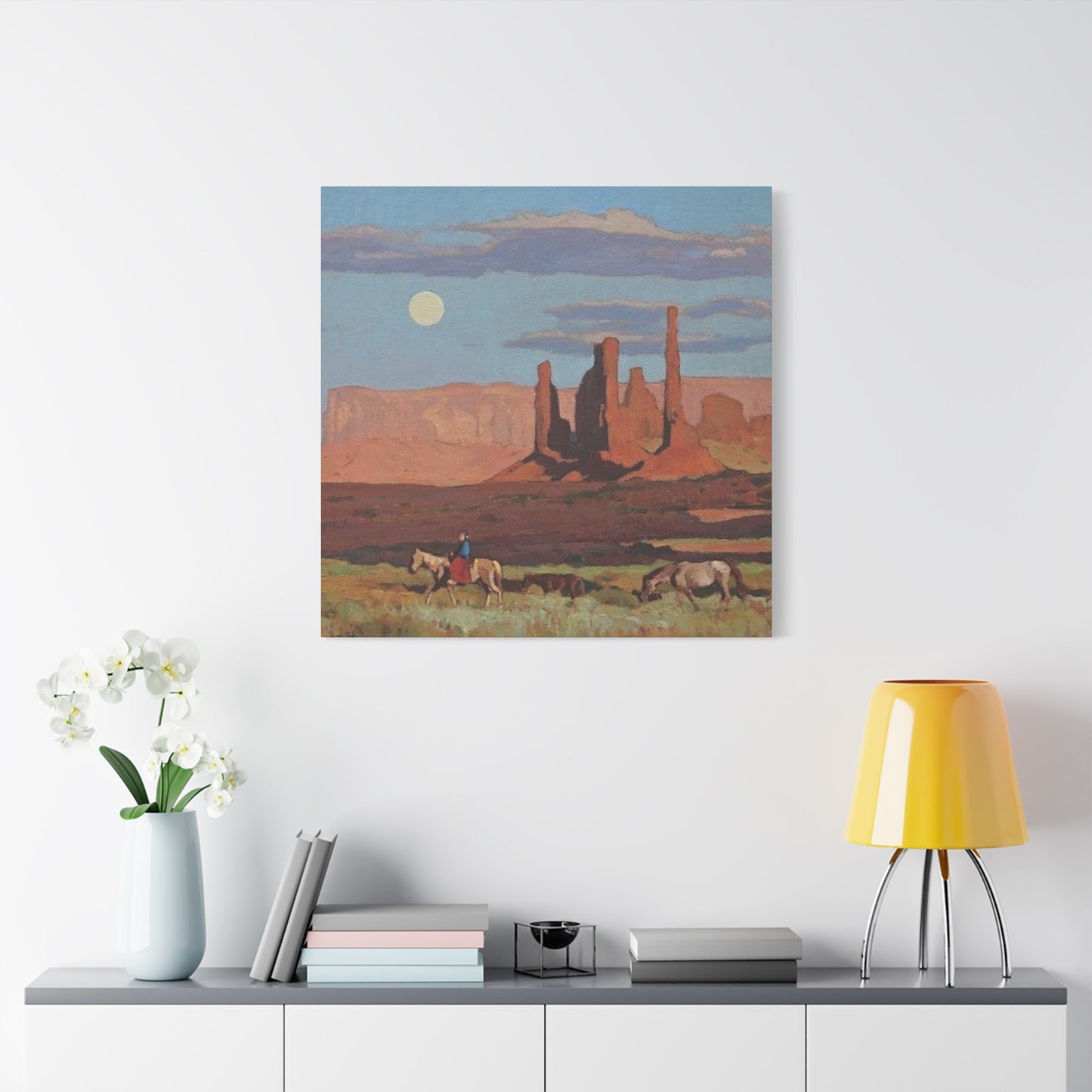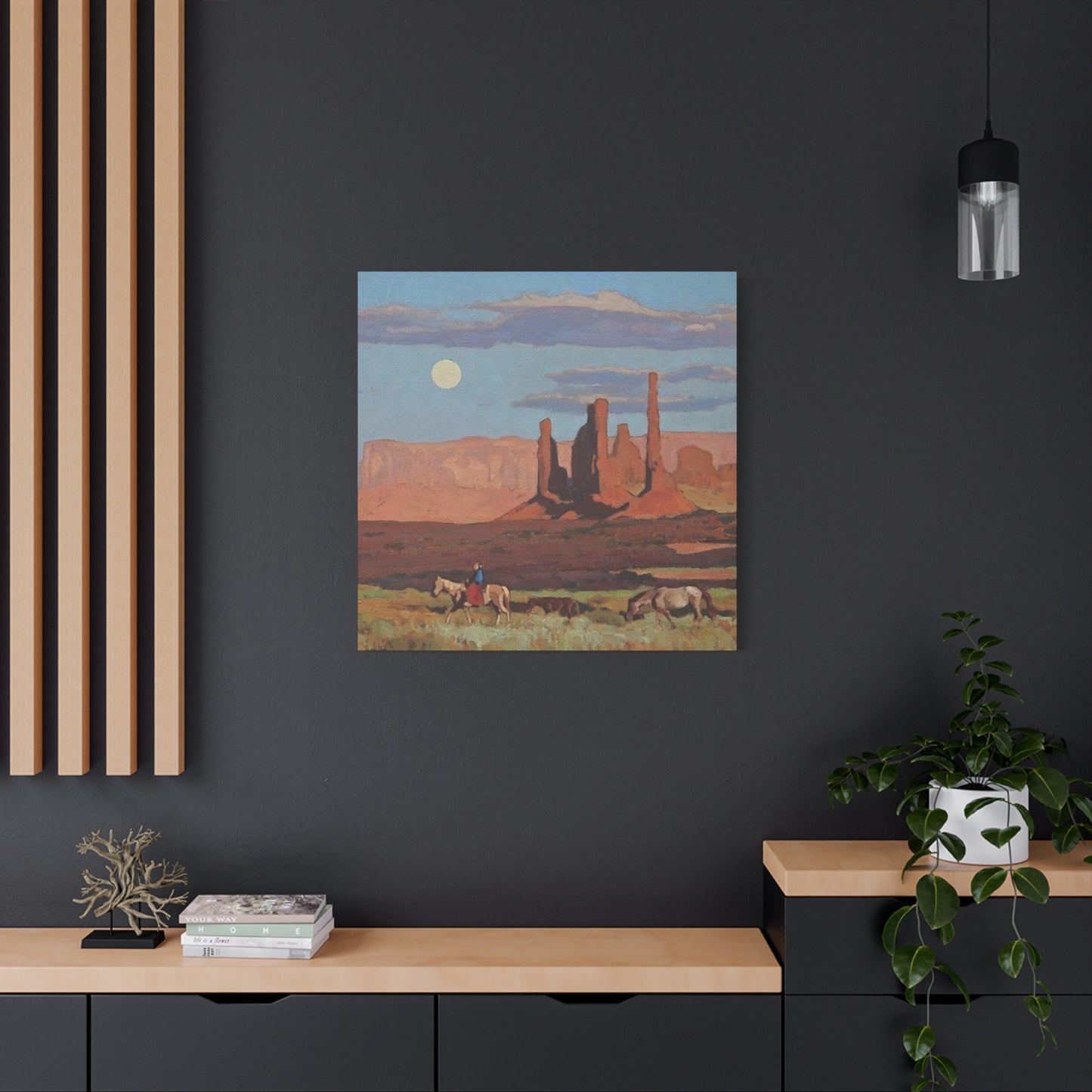Cowboys And Grand Canyon Wall Art & Canvas Prints
Cowboys And Grand Canyon Wall Art & Canvas Prints
Couldn't load pickup availability
Exploring Western Heritage Through Stunning Visual Masterpieces for Your Living Space With Cowboys And Grand Canyon Wall Art
The American West has long captivated imaginations worldwide, with its rugged landscapes, legendary figures, and timeless tales of frontier life. Among the most compelling ways to bring this rich heritage into modern homes is through carefully curated wall art that celebrates both the iconic cowboy culture and the majestic natural wonder of the Grand Canyon. This comprehensive exploration delves into the world of western-themed decorative pieces, examining how these visual elements can transform any space while honoring the spirit of the Old West.
Discovering the Rich Symbolism Behind Western Cowboy Imagery in Contemporary Home Decoration
The cowboy represents far more than a simple occupational figure from America's past. These resilient individuals embodied qualities that continue to resonate deeply with people today: independence, courage, perseverance, and a profound connection to the land. When incorporated into wall art, cowboy imagery carries these symbolic meanings into our daily environments, creating spaces that inspire and remind us of these enduring values.
Western cowboy artwork encompasses a remarkable range of styles and subjects. From silhouettes of riders against sunset skies to detailed portraits capturing weathered faces that tell stories of decades spent under the open sky, each piece offers a unique perspective on this cultural icon. The visual language of cowboy art speaks to something primal in the human spirit—the desire for freedom, the respect for hard work, and the appreciation of natural beauty unmarred by excessive civilization.
Contemporary artists working in this genre often blend traditional Western themes with modern artistic sensibilities. Some create photorealistic renderings that capture every detail of leather chaps, worn saddles, and dusty trails, while others take more abstract approaches, using bold colors and simplified forms to evoke the essence of cowboy life rather than documenting it literally. This diversity ensures that collectors can find pieces that align perfectly with their personal aesthetic preferences while still celebrating Western heritage.
The materials and methods used to create cowboy wall art have evolved considerably over the years. While classic oil paintings remain popular, modern reproductions using high-quality printing allow more people to enjoy these images at accessible price points. Canvas prints, metal prints, and even wooden plaques offer different textural qualities that can complement various interior design schemes. Each medium brings its own character to the artwork, from the traditional warmth of canvas to the contemporary sleekness of aluminum prints.
Understanding the Geological Marvel and Visual Splendor of Grand Canyon Landscape Representations
The Grand Canyon stands as one of Earth's most spectacular natural formations, carved over millions of years by the relentless flow of the Colorado River through layers of ancient rock. This geological masterpiece reveals a breathtaking cross-section of planetary history, with colorful strata representing different epochs stretching back nearly two billion years. The sheer scale of this chasm—stretching 277 miles long, up to 18 miles wide, and over a mile deep—challenges human comprehension and has inspired countless artists to attempt capturing its majesty.
Landscape artwork featuring the Grand Canyon faces unique challenges. How does one convey the overwhelming sense of scale that visitors experience when standing at the rim? How can a two-dimensional surface communicate the depth, the play of light across distant cliff faces, the subtle color variations that shift throughout the day? Skilled artists approach these questions through various means—some emphasize the dramatic contrasts between sunlit peaks and shadowed valleys, while others focus on the intricate patterns created by erosion over eons.
Photography has become an increasingly popular medium for Grand Canyon wall art, as modern cameras can capture stunning detail and color accuracy. However, even the most sophisticated photography requires artistic vision to compose shots that truly communicate the canyon's grandeur. The best photographic prints showcase moments when lighting conditions create particularly dramatic effects—the golden hour before sunset, when warm light bathes the red rocks in an otherworldly glow, or after rare summer storms, when temporary waterfalls cascade down ancient cliffs.
Paintings of the Grand Canyon offer different advantages, allowing artists to interpret the landscape through their unique creative lens. Impressionistic approaches capture the atmosphere and feeling of the place, using bold brushstrokes and vibrant colors to evoke emotional responses rather than documenting every geological detail. Hyperrealistic paintings, conversely, can spend months recreating every shadow and texture with meticulous precision. Both approaches have merit and appeal to different collectors based on their personal preferences and the atmosphere they wish to create in their spaces.
Examining How Western Art Pieces Create Powerful Focal Points in Various Room Settings Throughout Your Home
The strategic placement of Cowboys And Grand Canyon Wall Art can dramatically alter the atmosphere and flow of any room. These pieces function as more than mere decoration; they become conversation starters, mood setters, and expressions of the homeowner's values and interests. Understanding how to effectively incorporate Western-themed artwork into different spaces requires consideration of numerous factors, from room function to existing color palettes.
In living rooms, large-scale Western artwork can serve as a commanding focal point above seating areas. A substantial piece depicting a dramatic Grand Canyon vista or a group of cowboys on a cattle drive draws the eye and anchors the entire room's design. The colors within the artwork can inform choices for accent pillows, throws, and other decorative elements, creating a cohesive aesthetic that feels intentional rather than haphazard. The living room, being a primary gathering space, benefits from artwork that reflects the homeowner's personality and invites guests to engage with the imagery.
Dining rooms present excellent venues for Western wall art, as meals become occasions to discuss the stories suggested by the images. A series of smaller cowboy or canyon scenes can line the walls, creating a gallery effect that transforms the dining experience into something more memorable. The warm earth tones common in Western art complement natural wood furniture particularly well, establishing connections between the artwork, the furnishings, and the organic materials that define rustic or Southwestern design aesthetics.
Home offices and studies benefit tremendously from carefully selected Western artwork. The symbolism inherent in cowboy imagery—determination, self-reliance, perseverance through challenges—can provide daily inspiration for professionals facing their own metaphorical frontiers. A stunning Grand Canyon landscape might serve as a reminder of nature's patient, persistent forces that achieve remarkable results over time, a valuable perspective when dealing with long-term projects or difficult periods. The psychological impact of these visual reminders should not be underestimated, as they subtly influence mindset and motivation.
Bedrooms represent intimate spaces where artwork takes on different significance. Here, Western pieces should evoke the feelings one wishes to experience during private hours—perhaps the tranquility of a vast, open landscape, the romance of a solitary rider under stars, or the serene beauty of the Grand Canyon at dawn. Softer, more contemplative Western scenes often work better in bedrooms than action-packed cattle drive depictions, though personal preference ultimately dictates the best choices. The bedroom's lighting conditions also matter; artwork should remain visible and impactful in the softer, ambient lighting typically used in these spaces.
Hallways and entryways offer opportunities to establish thematic continuity throughout a home. A series of related Western pieces can guide visitors through spaces, creating a narrative journey that parallels the physical movement through the house. An entrance featuring a powerful cowboy or Grand Canyon image immediately communicates the homeowner's aesthetic sensibilities and sets expectations for the design philosophy visitors will encounter throughout the residence.
Exploring the Color Palettes That Define Authentic Western and Canyon-Inspired Artwork Collections
Color plays a fundamental role in how Western-themed artwork impacts a space. The characteristic hues found in Cowboys And Grand Canyon Wall Art—earthy browns, burnt oranges, deep reds, dusty golds, and weathered blues—create immediate associations with the American Southwest and frontier life. Understanding these color relationships helps collectors select pieces that will harmonize with their existing decor or serve as jumping-off points for entire room redesigns.
The Grand Canyon's color story begins with the geological composition of its exposed rock layers. Iron oxide compounds create the famous reds and oranges of formations like the Redwall Limestone and the Supai Group. Calcium carbonate produces lighter, cream-colored layers such as the Kaibab Limestone visible at the rim. Shale formations contribute grays and blacks. Throughout the day, sunlight interacts with these minerals at changing angles, causing the canyon to display an astonishing range of colors—from soft morning pinks to intense midday contrasts to rich twilight purples.
Artists representing the Grand Canyon must make choices about which colors to emphasize based on their artistic intent. Some opt for heightened, saturated colors that exaggerate the natural tones to create more dramatic visual impact. Others pursue faithful color accuracy, attempting to reproduce the exact shades visible during specific times and weather conditions. Still others take interpretive approaches, using unconventional color schemes to express personal emotional responses to the landscape. Each approach results in artwork with different decorating implications and aesthetic effects.
Cowboy-themed artwork typically features a different but complementary color palette. The browns and tans of leather gear, the faded blues of denim, the varied browns of horses, and the dusty earth tones of trails and rangelands create a cohesive color family. Many cowboy paintings include skies ranging from clear azure to stormy gray to sunset gold, adding vertical color interest to balance the horizontal earth tones. The weathered faces of cowboys often display sun-darkened skin tones that add warmth to compositions.
When combining cowboy and Grand Canyon elements in a single space, the natural color harmony between these subjects becomes apparent. Both draw from the same earth-tone family, making it relatively easy to create gallery walls or multi-room schemes that feel unified despite featuring different subject matter. This compatibility allows collectors to blend various Western themes without creating visual chaos, as long as they remain mindful of maintaining balanced color distribution and avoiding overwhelming any single space with too much visual information.
Seasonal variations also affect how Western artwork appears in different lighting conditions. Natural sunlight changes throughout the year, being warmer and more golden during winter months and cooler during summer. These variations interact with the pigments in artwork, causing subtle shifts in how colors appear. Collectors should consider viewing potential purchases under various lighting conditions when possible, ensuring that pieces will remain visually satisfying throughout the year's changing illumination patterns.
Investigating the Historical Context and Cultural Significance of Cowboy Life in American Heritage
The cowboy era, roughly spanning from the end of the Civil War in 1865 through the 1890s, represented a unique chapter in American history. During these decades, millions of cattle were driven from Texas ranches to railroad terminals in Kansas and other northern states, requiring skilled horsemen to manage these massive herds across hundreds of miles of open range. This period, though relatively brief, generated a mythology that has far outlasted the actual historical moment, becoming central to American cultural identity.
Real cowboys led lives of considerable hardship that contrasted sharply with the romanticized versions that quickly emerged in dime novels and Wild West shows. Long days in the saddle, sleeping on hard ground, enduring extreme weather, eating monotonous meals, and facing genuine dangers from stampedes, outlaws, and hostile encounters made cowboy work physically demanding and often lonely. Most cowboys were young men, with many leaving the profession before reaching thirty due to injuries or seeking more stable employment.
The ethnic diversity of real cowboy populations is often overlooked in popular representations. Significant numbers of Black cowboys worked on cattle drives and ranches, many being former slaves who found greater freedom and opportunity in the West than in the postwar South. Mexican vaqueros contributed crucial skills and traditions that shaped American cowboy culture, introducing techniques, equipment designs, and even vocabulary that persist today. Native Americans also worked as cowboys, though their complex relationship with western expansion adds layers of historical complication often absent from simplified mythologies.
Understanding this historical complexity enriches the experience of Cowboys And Grand Canyon Wall Art. Contemporary artists who research and represent this fuller history create more authentic and meaningful work. Some modern Western artists specifically highlight the contributions of underrepresented groups, creating artwork that corrects historical omissions and presents a more accurate picture of frontier life. Collectors interested in this aspect of Western heritage can seek out these more historically informed representations.
The cowboy code—that largely mythical but culturally powerful set of ethical principles attributed to frontier horsemen—emphasizes honor, loyalty, courage, self-reliance, and respect for the land and its creatures. While historical cowboys probably fell short of these ideals as often as anyone, the symbolic importance of these values explains much of the cowboy's enduring appeal. Wall art featuring cowboy imagery often serves as a visual reminder of these principles, creating spaces that feel grounded in these traditional virtues regardless of the actual historical realities.
Delving Into Artistic Styles and Movements That Have Shaped Western Landscape and Figure Portrayal
Western art constitutes a recognized genre with its own evolution, influential artists, and stylistic developments. Understanding this artistic lineage provides context for contemporary Cowboys And Grand Canyon Wall Art and helps collectors appreciate the traditions informing current works. The genre encompasses everything from documentary realism to romantic idealization to modernist reinterpretation, reflecting changing cultural attitudes toward the American West over time.
Early Western artists like George Catlin and Karl Bodmer traveled the frontier in the 1830s, creating documentary records of Native American cultures and western landscapes before extensive European-American settlement. Their works, while sometimes colored by their own cultural assumptions, provided some of the first visual records of western life for eastern audiences. These ethnographic approaches emphasized accuracy and detail, attempting to capture specific cultural practices and landscape features with scientific precision.
The later nineteenth century saw the rise of more romantic Western painting through artists like Albert Bierstadt and Thomas Moran. These painters created massive, dramatic landscape canvases that emphasized the sublime aspects of western scenery. Moran's Grand Canyon paintings, some reaching enormous dimensions, played significant roles in conservation efforts, helping convince Congress to establish national parks and preserve these natural wonders. Their luminous, idealized landscapes established visual conventions that still influence how people imagine the West.
Frederic Remington and Charles M. Russell emerged as the quintessential cowboy artists around the turn of the twentieth century. Remington's dynamic action scenes captured the energy and drama of cavalry charges, stampedes, and frontier conflicts, while Russell's more intimate and often humorous depictions revealed affection for working cowboys and their everyday experiences. Both created enduring visual vocabularies for representing Western subjects that continue influencing artists today.
The twentieth century brought modernist influences to Western art. Artists began experimenting with abstraction, stylization, and unconventional color schemes while maintaining recognizable Western subject matter. This evolution allowed the genre to remain relevant and vital rather than becoming trapped in historical nostalgia. Contemporary Western artists draw from this rich tradition while incorporating current artistic trends, creating work that honors the past while speaking to present audiences.
Photorealism emerged as another significant strand of Western art, with painters creating images so detailed they rival or surpass photographic clarity. These works showcase technical virtuosity while also making statements about perception, memory, and representation. In the context of Western art, photorealistic approaches can strip away romantic filters, presenting subjects with unflinching honesty that forces viewers to see familiar imagery with fresh eyes.
Analyzing Frame Selection and Presentation Methods That Enhance Western Artwork Visual Impact
The frame surrounding Cowboys And Grand Canyon Wall Art significantly affects how the piece appears and interacts with its environment. Far from being an afterthought, frame selection represents a crucial decision that can either enhance or undermine the artwork's effectiveness. Different framing approaches suit different artistic styles, room aesthetics, and personal preferences, making this aspect of art collecting more complex than many initially realize.
Traditional wooden frames in rich, dark finishes complement classic Western paintings particularly well. These substantial frames provide visual weight that matches the serious subject matter, while wood's natural warmth harmonizes with the earth tones prevalent in Western art. Ornate carved frames suit formal spaces and more romanticized artwork, while simpler profiles work better in casual settings or with contemporary pieces. The wood species itself matters—weathered barnwood frames create rustic effects, while polished cherry or walnut conveys elegance.
Metal frames offer contrasting possibilities that can create striking effects with Western artwork. Black metal frames provide clean, modern presentations that allow the artwork to command full attention without competing with ornate frame details. Bronze or copper-toned metal frames can pick up warm tones within the artwork while adding subtle shimmer that catches light. Thin metal frames work particularly well with contemporary Western photography, creating gallery-style presentations that emphasize the image itself.
Frameless presentations, including gallery wraps where canvas extends around the edges of the stretcher bars, create seamless, contemporary looks that suit modern interiors. This approach works especially well with panoramic Grand Canyon landscapes, where frames might interrupt the expansive feeling the artwork aims to convey. However, frameless presentations require higher-quality printing and mounting since edges remain visible, and they offer less protection for the artwork.
Matting creates space between artwork and frame, affecting the overall presentation considerably. Wide mats create breathing room that can make artwork feel more important and formal, while narrow mats or no matting produces more immediate, casual impressions. Mat color choices matter tremendously—neutral whites, creams, and grays are safe choices that don't compete with artwork, while colored mats can either complement or clash depending on their relationship to colors within the piece. Multiple mat layers create depth and additional visual interest.
Float mounting, where artwork appears suspended within the frame with space between the image edges and the frame, creates sophisticated, gallery-quality presentations. This approach works beautifully with Western photography and contemporary paintings, creating the impression that the artwork floats free from its surroundings. The visible edges of the substrate become part of the design, requiring clean, intentional finishing.
Examining Size Considerations and Scale Relationships When Displaying Western Themed Artwork
Selecting appropriately sized Cowboys And Grand Canyon Wall Art for a given space involves more than measuring wall dimensions. Scale relationships between artwork, furniture, and room proportions determine whether pieces feel balanced and intentional or awkward and ill-fitting. Understanding these relationships helps collectors make choices that maximize the impact of their Western artwork while creating harmonious, well-proportioned spaces.
The general guideline suggests that artwork above furniture should span roughly two-thirds to three-quarters of the furniture's width. For instance, artwork above a standard sofa should measure approximately four to five feet wide to maintain proper visual proportion. However, this represents a starting point rather than an absolute rule—dramatic oversized pieces can make bold statements, while smaller artworks arranged in groups can create equally effective compositions.
Ceiling height significantly influences appropriate artwork size. Standard eight-foot ceilings accommodate most moderately sized pieces without issue, but higher ceilings found in many contemporary homes demand larger artwork to avoid pieces appearing lost on expansive walls. A massive Grand Canyon landscape that overwhelms a room with standard ceilings might perfectly suit a space with ten or twelve-foot ceilings, filling the vertical space without dominating inappropriately.
Viewing distance matters when considering artwork size and detail level. Pieces intended for close viewing can incorporate fine details that reward careful examination, while artwork meant to be seen from across large rooms should feature bolder compositions and larger elements that read clearly at a distance. A detailed cowboy portrait with subtle facial expressions requires closer viewing than a dramatic silhouette against a sunset sky that maintains impact across an entire great room.
Multiple pieces arranged together create cumulative visual weight that should be considered holistically. A gallery wall of smaller Western photographs or prints can command as much presence as a single large painting if thoughtfully arranged. The negative space between pieces contributes to the overall composition, with tighter groupings creating unified statements and more dispersed arrangements maintaining individual piece identity while establishing connections through shared themes or colors.
Vertical versus horizontal orientation affects how artwork interacts with space. Horizontal pieces emphasize width, making them natural choices for spaces above sofas, beds, or long console tables. Vertical pieces draw the eye upward, potentially making rooms feel taller while working well in narrower wall spaces such as between windows or beside doorways. The Grand Canyon's expansive horizontal character often suits wide landscape formats, while lone cowboy figures might work better in vertical or square compositions.
Reviewing Lighting Strategies That Properly Illuminate and Showcase Western Art Collections
Proper illumination transforms how Cowboys And Grand Canyon Wall Art appears and functions within a space. Lighting affects color perception, reveals or obscures details, creates dramatic effects, and protects artwork from damage. Developing effective lighting strategies requires understanding various light sources, their characteristics, and their potential impacts on both artwork and overall room atmospheres.
Natural daylight offers the most accurate color rendering, allowing viewers to see artwork as the artist intended under optimal conditions. However, natural light poses significant preservation challenges for artwork. Ultraviolet radiation causes fading, color shifts, and material degradation over time. Direct sunlight accelerates these processes dramatically, making it essential to position valuable artwork away from direct sun exposure or use UV-filtering glass and window treatments to minimize damage while still benefiting from natural illumination.
Ambient room lighting from ceiling fixtures provides general illumination that affects how artwork appears throughout daily use. Warm-toned ambient lighting, common in residential settings, enhances the warm earth tones prevalent in Western art but can make cooler blues appear muddy or dull. Cooler-toned lighting provides more neutral color rendering but may feel less inviting in living spaces. Many modern fixtures offer adjustable color temperatures, allowing customization based on time of day and specific needs.
Picture lights mounted directly on frames or walls above artwork provide dedicated illumination that ensures pieces remain visible and impactful regardless of overall room lighting conditions. Traditional brass picture lights create classic, elegant presentations, while modern LED picture lights offer energy efficiency and minimal heat output that protects artwork while providing excellent illumination. The challenge involves selecting fixtures that complement rather than distract from the artwork they illuminate.
Track lighting and directional recessed fixtures provide flexible solutions for lighting multiple pieces or creating dramatic effects through controlled spotlighting. These systems allow precise aiming and adjustment, making them excellent for gallery walls or rotating collections where lighting needs change. Dimming capabilities add further flexibility, permitting lighting levels appropriate to various activities and times of day. The ability to highlight specific pieces while allowing others to recede creates dynamic visual hierarchies.
Accent lighting from table lamps, floor lamps, or wall sconces contributes ambient light that can wash across artwork while serving other functions. Positioning these sources to avoid glare on glass-covered artwork requires care, but when successful, this approach integrates artwork illumination naturally into overall room lighting schemes. The layered lighting effect combining multiple sources at different heights and intensities creates depth and visual interest throughout spaces.
Investigating Material Choices and Printing Methods for Contemporary Western Art Reproductions
Modern reproduction methods have democratized access to Cowboys And Grand Canyon Wall Art, allowing wider audiences to enjoy Western imagery without the prohibitive costs of original paintings. Understanding the various materials and printing processes helps collectors make informed decisions about quality, longevity, and aesthetic effects. Each production method offers distinct advantages and limitations that suit different needs and budgets.
Canvas prints have become tremendously popular for reproducing paintings and photographs. High-quality giclée printing on archival canvas creates remarkably faithful reproductions that capture subtle color gradations and details. The canvas texture adds dimensionality and artistic character that flat paper lacks, particularly when gallery-wrapped around stretcher bars. However, canvas prints vary tremendously in quality—cheap prints using inferior materials and poor color management may appear acceptable initially but fade or deteriorate relatively quickly.
Metal prints represent a contemporary option that works brilliantly with photographic Western imagery. The process involves infusing dyes directly into specially coated aluminum, creating prints with exceptional color vibrancy, sharpness, and longevity. The metal surface provides unique qualities—subtle luminosity, modern aesthetic appeal, and remarkable durability. Grand Canyon photographs rendered on metal achieve stunning depth and color saturation that can exceed even premium paper prints. The medium suits contemporary interiors particularly well.
Paper prints remain the traditional choice for fine art reproductions and limited edition works. Archival papers specifically designed for fine art printing provide exceptional detail rendering and color accuracy. Various paper types offer different aesthetic qualities—smooth papers emphasize detail and sharpness, while textured papers add artistic character and reduce glare. Paper prints typically require matting and framing behind glass, adding protection while creating more traditional presentations.
Acrylic prints create striking contemporary presentations where images appear embedded within clear acrylic panels. This process produces intense color saturation and remarkable depth, making images appear to float within the material. The glossy acrylic surface adds luminosity and modern sophistication, though glare can be problematic in some lighting conditions. These prints work particularly well with bold, graphic Western imagery and contemporary photography.
Wood prints offer rustic character that naturally complements Western themes. Images transferred onto planks or panels of real wood incorporate the wood grain as part of the composition, creating one-of-a-kind pieces even from the same original image. The organic texture and natural material resonate with Western subject matter, creating authentic-feeling pieces that work beautifully in rustic or cabin-style interiors. Quality varies significantly, with some processes producing more durable and fade-resistant results than others.
Considering the Emotional and Atmospheric Effects That Western Imagery Creates in Living Environments
Beyond aesthetic considerations, Cowboys And Grand Canyon Wall Art affects the psychological atmosphere of spaces in profound ways. The emotional resonance of Western imagery—the feelings it evokes and the associations it triggers—shapes how people experience rooms on subtle but significant levels. Understanding these psychological dimensions helps explain Western art's enduring popularity and guides collectors toward pieces that will genuinely enhance their daily lives.
Grand Canyon landscapes evoke feelings of awe, perspective, and humility in the face of natural grandeur. The canyon's immense scale and ancient geology remind viewers of time spans that dwarf human concerns, providing valuable perspective during stressful periods. Many people find these images calming and centering, as they encourage mental expansion beyond immediate worries. The natural beauty captured in canyon artwork satisfies innate human desires for connection with unspoiled nature, even when actual wilderness remains geographically distant.
Cowboy imagery connects with different but equally powerful emotional currents. The freedom associated with life on horseback, traveling vast open landscapes unconstrained by walls or schedules, speaks to yearnings for independence and escape from modern complexity. The self-reliance required for frontier survival resonates with people seeking to cultivate greater agency in their own lives. The connection to animals, land, and weather that defined cowboy existence offers appealing contrast to urbanized, indoor-focused contemporary lifestyles.
Nostalgia plays a significant role in Western art's appeal, even for those with no personal connection to ranch life or the American Southwest. The imagery taps into collective cultural memories and mythologies that shape American identity. For older generations, Western art may evoke childhood memories of Western films and television shows that dominated mid-twentieth-century entertainment. For younger audiences, the same imagery represents a simplified, adventurous alternative to the overwhelming complexities of the digital age.
The masculine associations of cowboy culture appeal to many men seeking to express values like strength, courage, and self-sufficiency in their personal spaces. However, Western art's appeal transcends gender—many women appreciate the aesthetic beauty of landscapes, the historical interest of period imagery, or the powerful symbolism of independence and capability that transcends gender boundaries. Modern Western artists increasingly create work that challenges traditional gender representations while maintaining connection to Western themes.
Color psychology explains some of Western art's atmospheric effects. The warm earth tones—reds, oranges, browns—create feelings of warmth, security, and groundedness. These colors stimulate gently rather than overstimulating, making them appropriate for both active spaces and relaxation areas. The blues often present in skies and shadows provide cooling balance, preventing rooms from feeling too heavy or overwhelming. This natural color harmony contributes to Western art's versatility across various room types.
Exploring Geographic Regions and Architectural Styles That Naturally Complement Western Artwork
While Cowboys And Grand Canyon Wall Art can enhance any space with appropriate selection and placement, certain geographic regions and architectural styles create particularly natural contexts for Western themes. Understanding these connections helps collectors develop cohesive design schemes that feel authentic rather than forced. Regional appropriateness doesn't constrain choices but rather provides starting points for thoughtful curation.
The American Southwest—Arizona, New Mexico, parts of Texas, Colorado, and Nevada—represents the obvious geographic heart of Western art's subject matter. Here, Western artwork connects directly to local landscape, history, and culture. A Grand Canyon print displayed in an Arizona home reflects actual geographic proximity, while cowboy artwork in Texas connects to the state's ranching heritage. In these regions, Western art feels indigenous rather than imported, creating natural design coherence.
Southwestern architecture, particularly adobe and pueblo-style structures, provides ideal settings for Western artwork. The earth-toned stucco walls, exposed wooden beams, terracotta tile floors, and general emphasis on natural materials create perfect backdrops for cowboy and canyon imagery. The architectural color palette mirrors the artwork's colors, creating unified aesthetic statements. Even architectural details like rounded doorways and corners, kiva fireplaces, and built-in niches seem designed specifically to showcase Western art.
Mountain and rural properties throughout the American West offer equally appropriate settings. Log homes in Montana or Wyoming, ranches throughout cattle country, and vacation properties in mountain regions all benefit from Western artwork that connects to their locations and purposes. In these settings, Western art reinforces the relationship between built structures and surrounding landscapes, helping interiors feel grounded in their specific places rather than existing as generic boxes that could be anywhere.
Interestingly, Western artwork often works beautifully in settings far removed from the actual American West. Urban lofts in Manhattan or Chicago can gain warmth and character from carefully selected Western pieces that provide contrast to the industrial aesthetics and urban intensity surrounding them. The artwork becomes a portal to different values and landscapes, offering psychological escape and visual relief. This contrast approach requires more careful curation to avoid feeling like theme-park decoration, but when executed well, creates sophisticated, unexpected interiors.
Rustic and lodge-style architecture anywhere provides natural contexts for Western art. Cabins in Appalachia, lake houses in Minnesota, or mountain retreats in the Cascades all share aesthetic sensibilities that harmonize with Western imagery despite geographic distance from the actual West. The shared emphasis on natural materials, connection to outdoor recreation, and somewhat simplified lifestyles creates common ground that makes Western art feel appropriate even in these non-Western locations.
Understanding the Role of Western Art in Expressing Personal Identity and Values Through Home Decoration
Home decoration represents a form of self-expression, with choices about furniture, colors, and artwork communicating aspects of identity to visitors while reinforcing those qualities for inhabitants themselves. Cowboys And Grand Canyon Wall Art serves these expressive functions particularly well due to the rich symbolism embedded in Western imagery. Understanding these communicative dimensions helps collectors select pieces that authentically reflect who they are or aspire to be.
Displaying Western artwork signals appreciation for particular values associated with frontier culture—independence, self-reliance, connection to nature, respect for hard work, and perhaps skepticism toward excessive complexity or pretension. These associations create immediate impressions about the homeowner's worldview and priorities. Someone who fills their home with Western art likely values straightforwardness over sophistication, experiences over possessions, and traditional values over trendy fashions, at least as perceived by visitors reading these visual cues.
Personal heritage connections motivate many Western art collectors. Someone with ranching family history or ancestors who pioneered westward uses artwork to honor and maintain those connections. The pieces serve as visual links to family stories and traditions, helping keep that heritage alive for younger generations who may lack direct experience of the lifestyles their forebears knew. In these cases, Western art functions almost as portraiture, representing valued ancestors through the activities and landscapes that defined their lives.
Adventure and outdoor recreation interests find natural expression through Western artwork. People passionate about horseback riding, hiking, camping, fishing, or hunting often decorate with imagery reflecting those pursuits. A stunning Grand Canyon landscape reminds them of memorable trips or fuels anticipation for future adventures. Cowboy artwork resonates with equestrians who understand the special relationship between rider and horse. These connections make the artwork more than mere decoration—it becomes visual representation of cherished activities central to their identities.
Some collectors appreciate Western art purely for aesthetic reasons without deeper symbolic investment. They simply find the colors, compositions, and subjects beautiful, enjoying how the artwork makes their spaces look and feel. This perspective represents an equally valid collecting motivation that shouldn't be dismissed as superficial. Visual pleasure matters, and if Western art provides that pleasure, collectors need no other justification for their choices.
Contrarian appeal motivates some contemporary collectors of Western art. In an era when minimalist, modern aesthetics dominate design publications and social media, choosing bold Western artwork represents a rejection of homogeneous trends in favor of personal preference. This countercultural stance appeals to individualists who resist being told what should appeal to them, instead following their own aesthetic inclinations regardless of current fashion.
Examining the Relationship Between Western Art and Broader Interior Design Movements and Trends
Cowboys And Grand Canyon Wall Art exists within larger contexts of interior design history and current trends. Understanding how Western themes relate to various design movements helps collectors integrate artwork successfully while making informed choices about which broader aesthetics align with their preferences. These connections also reveal how Western art has evolved from niche interest to accepted element of serious design.
The Southwestern or Santa Fe style that gained prominence in the 1980s and 1990s created mainstream acceptance of Western themes in interior design. This movement brought pueblo-inspired architecture, Native American textiles, rustic wood furniture, and Western artwork into middle-class homes nationwide. While some expressions of this style tipped into excessive theme-park kitsch, thoughtful applications demonstrated how Western elements could create warm, inviting spaces with strong sense of place. Contemporary designers continue refining these ideas, stripping away the excesses while retaining the appealing core concepts.
The rustic or cabin aesthetic shares considerable common ground with Western design sensibilities. Both emphasize natural materials, particularly wood and stone, and celebrate the handcrafted over the mass-produced. Both connect interior spaces to outdoor environments and prioritize comfort over formality. Western artwork fits seamlessly into rustic interiors, complementing lodge-style furnishings, exposed beams, stone fireplaces, and natural-fiber textiles. The aesthetic difference lies mainly in specific motifs—rustic design might incorporate wildlife and forest imagery while Western design features cowboys and desert landscapes.
Modern farmhouse style has dominated residential design in recent years, creating another context where Western art can thrive. This aesthetic combines clean lines and neutral palettes with warm wood tones and vintage elements, creating spaces that feel simultaneously contemporary and historically grounded. Western artwork, especially more minimalist or graphic examples, works beautifully in modern farmhouse interiors, providing visual interest and color while connecting to the rural heritage that informs the style's appeal.
Industrial design, characterized by exposed brick, metal fixtures, and open spaces, might seem incompatible with Western themes, yet the combination can yield striking results. The juxtaposition of romantic Western imagery against hard-edged industrial elements creates provocative tension that makes both more interesting. A massive Grand Canyon photograph or bold cowboy silhouette can soften industrial spaces while gaining impact from the contrast. This unexpected pairing appeals to urban dwellers seeking to incorporate more organic elements without abandoning their loft aesthetic.
Minimalist interiors require particular care when incorporating Western art, as the detailed, richly colored nature of many Western pieces can overwhelm sparse spaces. However, carefully selected examples—perhaps a single dramatic piece in an otherwise austere room—can provide the focal point that minimalism requires while respecting the philosophy's restraint. The key lies in treating the artwork as the room's primary decorative gesture rather than one element among many.
Conclusion
Developing a meaningful Cowboys And Grand Canyon Wall Art collection represents a journey rather than a single transaction. Thoughtful collectors develop strategies that guide their acquisitions, ensuring that over time they assemble bodies of work that feel cohesive and satisfying rather than random accumulations. Understanding various collecting approaches helps both beginners starting their first collections and experienced collectors refining their holdings.
The focused approach concentrates on specific subjects, periods, or artists. A collector might focus exclusively on Grand Canyon landscapes, acquiring multiple representations showing different viewpoints, times of day, or artistic interpretations. Alternatively, someone might collect works by a particular contemporary Western artist, acquiring multiple pieces that together demonstrate the artist's range and evolution. This focused strategy creates collections with obvious coherence, making them more interesting and valuable both aesthetically and potentially financially.
The eclectic approach embraces diversity within the general Western theme, mixing cowboy scenes, landscapes, Native American subjects, and wildlife imagery. This strategy allows collectors to follow their instincts and interests as they encounter appealing pieces without rigid restrictions. The challenge involves maintaining enough coherence that the collection feels curated rather than haphazard. Common elements like color palette, framing style, or emotional tone can unify diverse subjects.
Quality-over-quantity represents an important guiding principle regardless of specific approach. Better to own three exceptional pieces than thirty mediocre ones. Outstanding artwork provides enduring satisfaction, never becoming tiresome or disappointing, while inferior pieces quickly lose appeal once the initial enthusiasm fades.
Share


